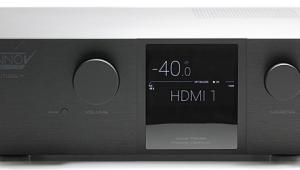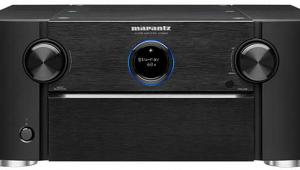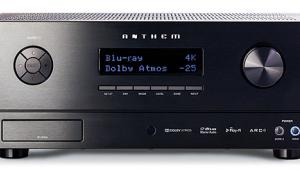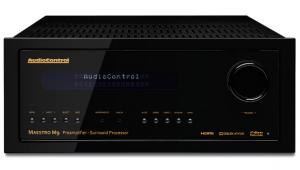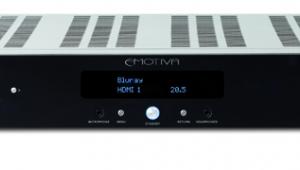Have you made any follow up reviews on this outlaw combo and is your opinion still the same?
I'm seriously considering buying this combo and want to avoid a purchasing mistake.
Thanks!
Test Report: Outlaw Audio Model 975 Preamp/Processor
You can’t get much plainer than Outlaw’s new Model 975 preamp/processor. With its unadorned black chassis and fascia and plain white lettering, the 975’s un-cosmetics speak of a component conceived to do a job, completely and effectively, and to otherwise stay the hell out of the way.
I’m guessing that’s how company founder Peter Tribeman meant it to be. Tribeman’s Outlaw Audio established the direct-to-consumer sales model for serious audio electronics more than a decade ago, and the firm has steadily grown while maintaining the independent, iconoclastic, slightly counter-cultural air it has carried from the outset. But for several years now this south-of-Boston gang has had a hole in its wall — one where a current-spec HDMI pre/pro should go. That hole is now filled by the new Model 975.
Outlaw’s new pre/pro is a just-the-facts design: no onscreen displays other than for setup; no extra modes for surround decoding or enhancement beyond Dolby PLIIz; and absolutely no “features.” Select your source, adjust your volume, and call it good.
For my test, Outlaw also sent along a sample of its 7-channel Model 7125 power amp, a $999 unit that’s “only” rated for 125 watts from each of its 7 outputs, though I can’t say I noted the least shortfall in terms of audio quantity or quality as compared with my everyday amp, a much more expensive unit rated at 150 watts x 7. The Outlaw amp is also a fairly bare-bones affair: an RCA-jack unbalanced input, a minijack input for a 12v turn-on trigger, and decently heavy 5-way binding-post outputs complete its feature-set. But who needs fancy on a power amp?
Setup
The Outlaw’s 4 HDMI v1.4 inputs (plus one output) come up short of the 6 or 7 found on most competitors, though that number should be plenty for most systems. The 975 also includes a surprising array of “legacy” connections for older gear: pairs of component, S-Video, and composite inputs, along with one output of each type. (There is no multi-channel analog input.)
For most users, however, system setup will consist of plugging in a couple of HDMI cables and connecting 6 or more analog audio cables to the power amp and subwoofer, which is all I did for most of my testing. The 975 lacks any auto-setup/calibration or room-EQ features, leaving you to your own devices for channel levels, delays, and crossover settings (all well covered in Outlaw’s estimable manual). On the one hand, I’m pretty well convinced that upper-echelon Audyssey processing can make more rooms sound better than otherwise. On the other, this is not an inexpensive feature with which to endow your product, and Outlaw probably figured that someone shopping for as pure a product as the Model 975 already has their speakers and room thoroughly worked up.
On the other, other hand, the Model 975 offers a satisfying palette of setup options, including very flexible bass-management, and one of the most extensive collection of subwoofer-level trim controls I’ve come across — you can set sub trims independently for almost every surround or 2-channel mode.
- Log in or register to post comments


